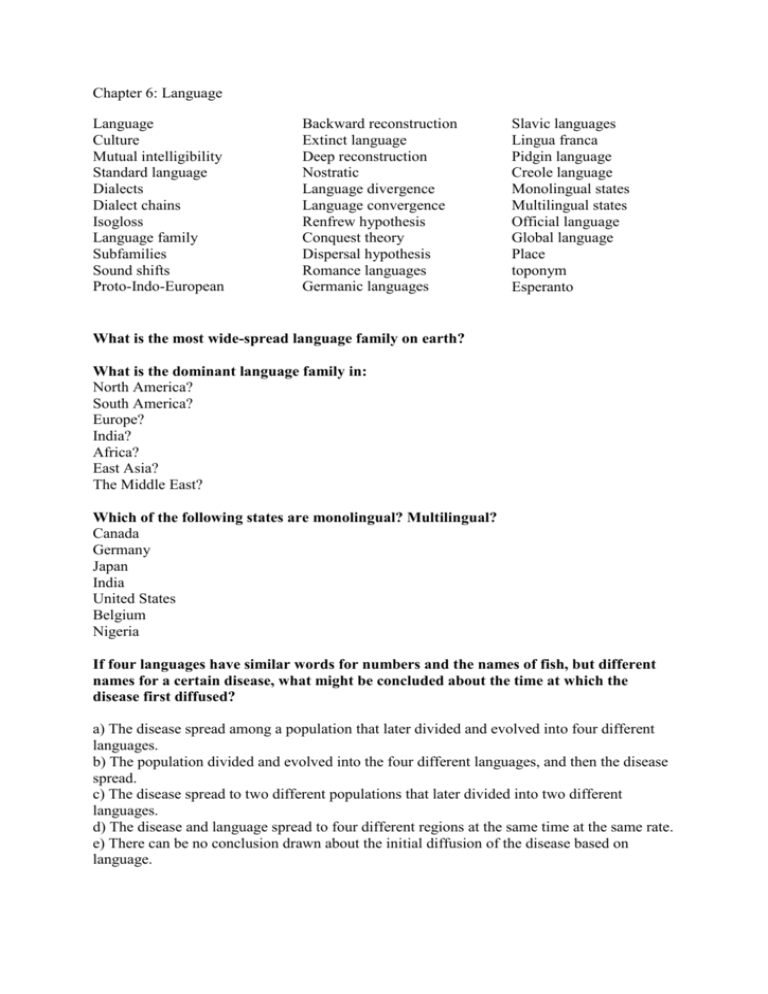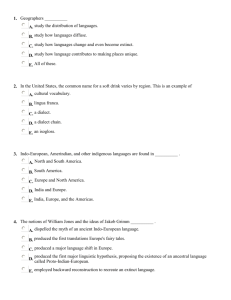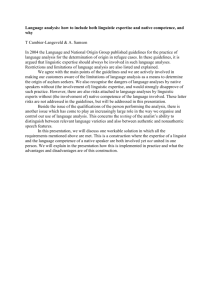Language - bugilsocialstudies
advertisement

Chapter 6: Language Language Culture Mutual intelligibility Standard language Dialects Dialect chains Isogloss Language family Subfamilies Sound shifts Proto-Indo-European Backward reconstruction Extinct language Deep reconstruction Nostratic Language divergence Language convergence Renfrew hypothesis Conquest theory Dispersal hypothesis Romance languages Germanic languages Slavic languages Lingua franca Pidgin language Creole language Monolingual states Multilingual states Official language Global language Place toponym Esperanto What is the most wide-spread language family on earth? What is the dominant language family in: North America? South America? Europe? India? Africa? East Asia? The Middle East? Which of the following states are monolingual? Multilingual? Canada Germany Japan India United States Belgium Nigeria If four languages have similar words for numbers and the names of fish, but different names for a certain disease, what might be concluded about the time at which the disease first diffused? a) The disease spread among a population that later divided and evolved into four different languages. b) The population divided and evolved into the four different languages, and then the disease spread. c) The disease spread to two different populations that later divided into two different languages. d) The disease and language spread to four different regions at the same time at the same rate. e) There can be no conclusion drawn about the initial diffusion of the disease based on language. Which of the following is true about language extinctions? a) They happen suddenly and without warning. b) They are usually the result of genocide. c) There could be several thousand over the next century. d) They are increasingly rare. e) They are unrelated to cultural imperialism. Which of the following areas has the greatest linguistic fragmentation? The least linguistic fragmentation? a) Korea b) Scandinavia c) Caucuses d) Argentina e) Quebec The greatest concentration of linguistic diversity on earth is in: a) Amazonia b) the Congo c) Madagascar d) New Guinea e) Mexico The use of the English language by all commercial airline pilots for the purpose of airtraffic control safety would be an example of a ______________________. People in London, Melbourne, Vancouver, and Mumbai all speak ___________. Two mountain towns with unique languages develop a new simple language, understood by both groups, for trade purposes. This is called ____________. Free Response Practice: Language extinction, both currently and throughout history, has been a major concern for cultural geographers, linguists, anthropologists, and other academics. (a) What are some causes of language extinction? (b) What kind of repercussions exist as a result of the loss of linguistic diversity? (c) Discuss some current trends to revive endangered or extinct languages around the world.











